This Is the Living Wage You Need in All 50 States

Making a livable wage can be a lifelong struggle. The mounting costs of housing and basic necessities can quickly add up, leaving you scraping to make ends meet rather than saving and building wealth. And depending on where you call home, that situation can be considerably worse.
That’s why GOBankingRates conducted a study to identify the annual living wage needed to live comfortably in each of the 50 states, revealing that even if you’re comfortably middle class in one region, that doesn’t mean you won’t be living paycheck to paycheck in another.
Not to be confused with the minimum wage, we define the “living wage” as the income you need to cover necessary and discretionary expenses while still contributing to savings. Using data from the Bureau of Labor Statistics and the 50/30/20 budgeting rule — which allocates 50% of your income to necessities, 30% to discretionary expenses and 20% to savings — the study found what you would need to earn to comfortably cover your basic needs while still saving for the future. But the results reveal that the average salary in your state might not be enough to do just that.
Last updated: Nov. 25, 2020

Alabama
Annual Living Wage: $60,016
Alabama is among the least expensive places in America to live — in part thanks to median housing costs of just $8,612 a year — but earning a median wage in the state would still leave inhabitants of the Yellow Hammer State $13,544 short of a living wage.

Alaska
Annual Living Wage: $91,996
Life near the Arctic Circle comes at a cost, with the cost of necessities in Alaska clearing $45,000 a year. That means you would need nearly $92,000 a year to still have half your wages left over for savings and luxuries.
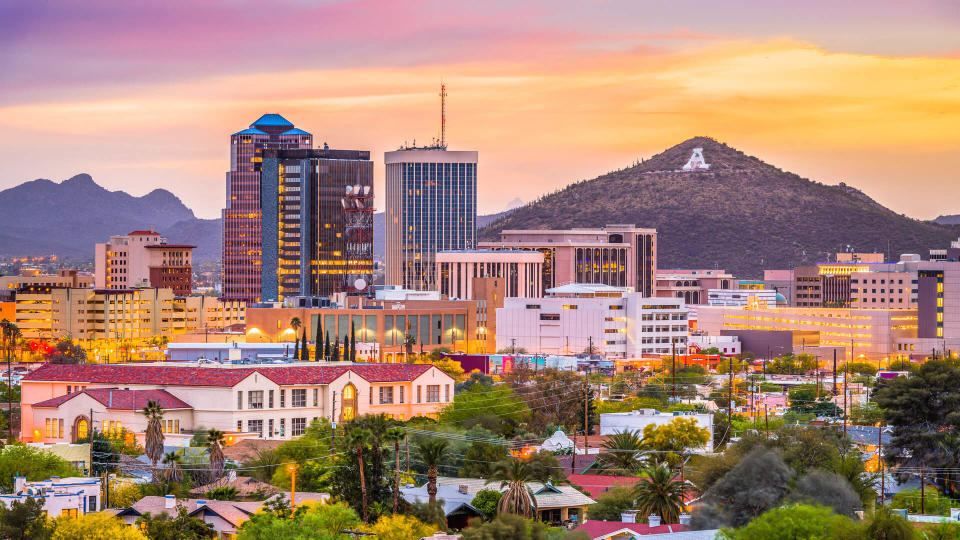
Arizona
Annual Living Wage: $68,504
Arizona’s cost of living is just 2.3% below the national average so that living wage is very close to what the average rate is nationwide. That said, the median household income in Arizona remains just under $15,000 short of that.
Make Your Income More Livable: 101 Side Business Ideas

Arkansas
Annual Living Wage: $59,461
Arkansas is another state where your dollar can stretch the furthest, with a cost of living that’s over 10% under the national average. Many residents of the Razorback State, though, are still struggling to hit that as the average household income is just $43,813 — the second-lowest in the country and nearly $14,000 less than the average American income.

California
Annual Living Wage: $99,971
The nation’s most populous state is also among the most expensive, with a living wage translating to just about six figures if you’re planning on following the 50/30/20 rule. Even for a state with an average annual income of $67,169, those are costs that are hard to bear.

Colorado
Annual Living Wage: $74,215
Life in the Rockies is just a little more expensive than elsewhere — about 4.5% more, to be specific — but the state’s residents appear to be in better shape than most to deal with it. The difference between the median income and the living wage is just $8,757, making it one of just 17 states where that gap is under $10,000.
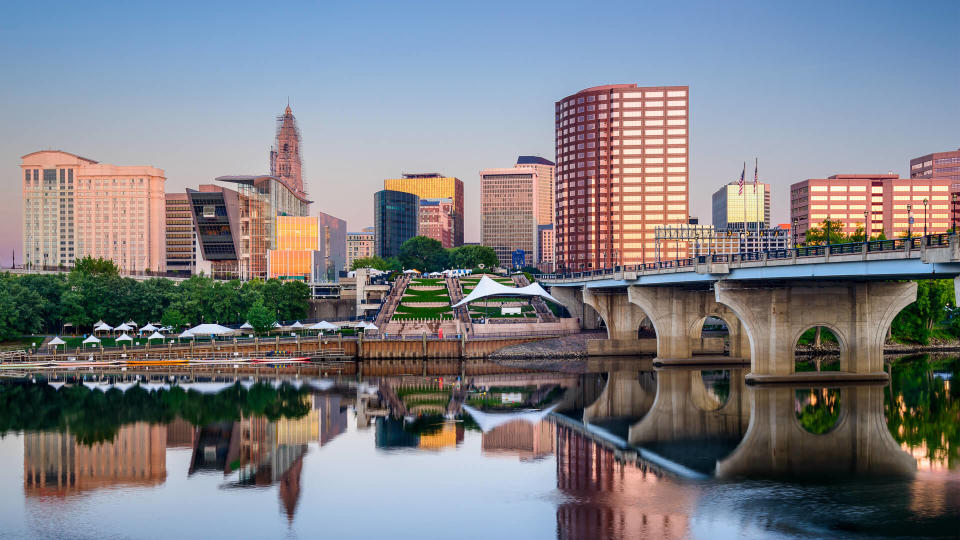
Connecticut
Annual Living Wage: $90,278
Connecticut’s relatively high cost of living means you would need to earn at least $90,000 to cover the average cost of necessities with half your salary. A big chunk of that ends up going to housing, with an average annual bill of $18,485 for Connecticut residents.
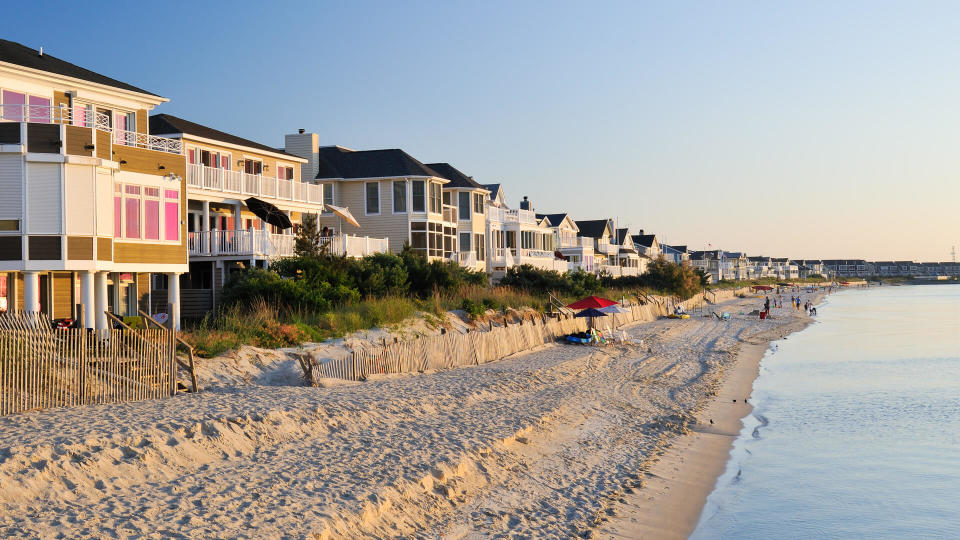
Delaware
Annual Living Wage: $71,254
While Delaware residents enjoy costs that are generally very close to the average nationwide, they are paying 12% more for their groceries than the average American, translating to an annual bill of nearly $5,000.

Florida
Annual Living Wage: $67,614
Although the cost of living in Florida is actually a hair under the national average, the median income in the Sunshine State isn’t quite so sunny at just over $50,000 a year. That leaves a gap of over $16,000 between the typical annual salary and a living wage. Still, Florida is considered one the best states for the middle class.

Georgia
Annual Living Wage: $62,074
Georgians likely have an easier time making ends meet than most. Their cost of living is below the national average, and while the median income is also relatively low, it’s still “just” $9,097 away from a living wage.

Hawaii
Annual Living Wage: $136,437
Hawaii is the most expensive state in the country, mostly due to housing costs that run more than triple the national average at about $36,000 a year. As such, despite a median income of nearly $75,000 a year, the typical Hawaiian is still over $61,000 short of a living wage — the largest such gap in this study.

Idaho
Annual Living Wage: $66,486
Idaho is another state that comes in under the national average for its cost of living, but also has a relatively low median salary for residents to create a large gap between what you need to earn and what people are actually earning. The end result is a median salary that’s more than $15,000 short of a living wage.

Illinois
Annual Living Wage: $66,847
Not only are costs lower than the national average in Illinois, but residents there are also earning a median salary of $61,229. That puts the average income just $5,618 below the living wage, among the 10 lowest levels in the study.

Indiana
Annual Living Wage: $62,086
Indiana is a relatively cheap place to live, with a cost of living that’s just short of 10 percent below the national average. And while that still leaves them with a higher living wage than what the median Hoosier is earning, Indiana is among those states where the gap is under $10,000.

Iowa
Annual Living Wage: $63,397
Iowa can boast relatively low costs of living — including housing costs that are almost 11% below the national average at just $9,552 per annum. That adds up to a median salary that’s just $6,827 short of the annual living wage for the state.

Kansas
Annual Living Wage: $62,090
Kansas wraps up a trio of Midwestern states where low median salaries are offset by low cost of living and puts a living wage in reach for many. With a median salary of $55,477, the typical Jayhawk falls just $6,613 short of a living wage.

Kentucky
Annual Living Wage: $63,086
While Kentucky has a low cost of living that’s largely in line with states like Kansas, Illinois and Iowa, the median salary of just $46,535 is much lower, leaving a $16,551 gap to a living wage despite below-average costs.

Louisiana
Annual Living Wage: $63,842
Much like Kentucky, Louisiana has low costs but also lower wages. A median salary in the state is just $46,710, so while residents might be paying almost 15% less for housing than the average American, they’re also more likely to be struggling to afford it.

Maine
Annual Living Wage: $80,336
Residents of Maine are much more likely to be struggling with higher costs than the rest of the country. The annual living wage of over $80,000 is among the highest in the country, but the median income there is on the lower side at just $53,024. That leaves a whopping $27,312 gap between a median salary and a living wage, one of the largest in the study.

Maryland
Annual Living Wage: $92,227
Maryland’s living wage of over $90,000 is among the highest in the country. However, many Marylanders can likely take solace in having the earnings to cover it: With a median annual salary of $78,916 — the nation’s highest — the typical earner is just over $13,000 short of a living wage.

Massachusetts
Annual Living Wage: $93,895
Massachusetts residents can expect that the cost of their basic necessities will run a full third higher than the national average when totaled, leaving a sky-high living wage of $93,895. And while it’s a state of high earners, the median income of $74,167 is still nearly $20,000 short of being able to fit those costs into a standard 50/30/20 budget.
Did You Know? Here’s the Salary You Need To Afford the Average Home in Your State

Michigan
Annual Living Wage: $67,712
Michigan is another state in the “low costs but low wages” category, with a cost of living that’s about 10% under the national average but a median annual salary of just $52,668. That means that earning a midlevel salary in Michigan still puts you just over $10,000 a year short of a living wage.

Minnesota
Annual Living Wage: $68,944
The term “Minnesota Nice” generally refers to its cordial residents, but it could also be talking about the nexus of decent wages and affordable costs in the state. While cost of living there is slightly higher than the national average — by just 1.5% — the median annual salary of $65,699 is just $3,245 short of a living wage.

Mississippi
Annual Living Wage: $58,321
Mississippi has the lowest cost of living in the country. But before anyone starts throwing any reasonably-priced parties, it also has the lowest median income in the nation at just over $42,000 — that results in a gap of over $16,000.

Missouri
Annual Living Wage: $60,858
Residents of the Show Me State might earn less — with a median annual income of $51,542 — but they’re also living somewhere where a dollar goes further. With a cost of living more than 10% under the national average, your typical Missourian is just less than $10,000 a year short of a living wage.

Montana
Annual Living Wage: $70,719
Some residents of the Big Sky State might grumble that it could just as easily be called the “Big Cost of Living State,” with average annual housing costs that exceed $13,000. That leaves a nearly $20,000 gap between the median annual income of just over $50,000 a year and the average annual living wage.
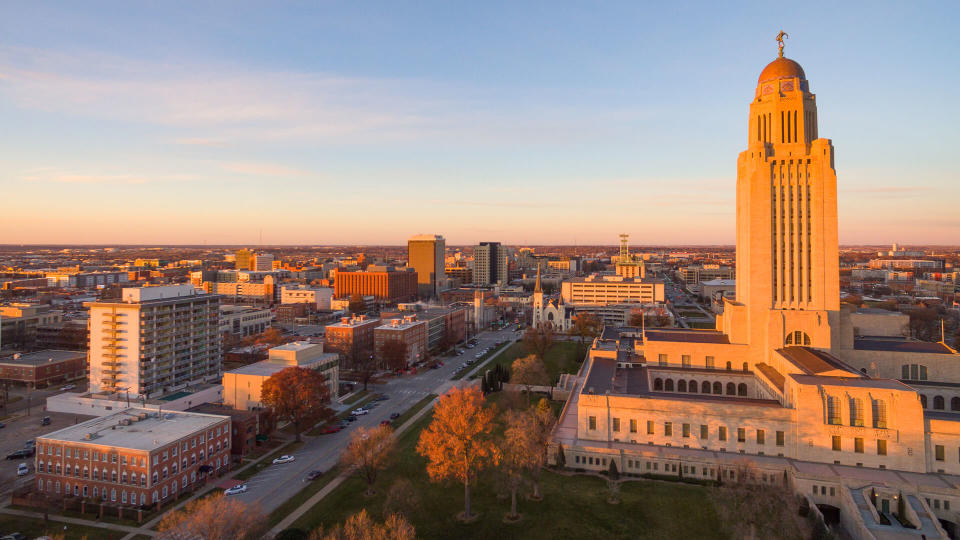
Nebraska
Annual Living Wage: $65,162
While the median annual salary of $56,675 might mean that the typical Cornhusker isn’t exactly rolling in the dough, it’s closer to a living wage than in most states because of a lower cost of living. With annual average housing costs just over $10,000 — about 12% under the national average — a median earner is just $8,847 short of a living wage.

Nevada
Annual Living Wage: $75,902
Nevada is a relatively expensive state where residents don’t appear to be earning enough to cover costs. All told, that living wage of $75,902 means Nevada is one of the eight states where the median income is $20,000 or more less than the living wage.

New Hampshire
Annual Living Wage: $74,415
While the cost of living in New Hampshire drives up its living wage to nearly $75,000 a year, the state also has a lot of residents with higher incomes, leading to a median salary of over $70,000 a year. The resulting gap between the two of just $3,110 is among the lowest in the study despite those high costs.

New Jersey
Annual Living Wage: $86,244
The annual cost of living in the Garden State is more than 20% higher than the rest of the country as a whole, but that also comes with higher wages in the state, where a median income is a whopping $76,475. So, despite a living wage over $85,000 a year, the typical resident is still within $10,000 of that mark.

New Mexico
Annual Living Wage: $63,629
It doesn’t cost as much to get by in New Mexico, but the state’s very low median income — just $46,718 — means most residents are still probably struggling to make ends meet. That median salary is nearly $17,000 short of a living wage.

New York
Annual Living Wage: $95,724
After Hawaii and California, no state is as expensive to call home as the Empire State. And while the median salary there is a healthy $62,765, the $32,959 gap from there to a living wage is second only to Hawaii and Oregon.

North Carolina
Annual Living Wage: $64,406
Tarheel State residents have significantly lower housing costs than most — costing them under $10,000 a year on average. However, despite this, a low median income in the state leaves the typical resident earning $14,086 less than they need for a living wage.
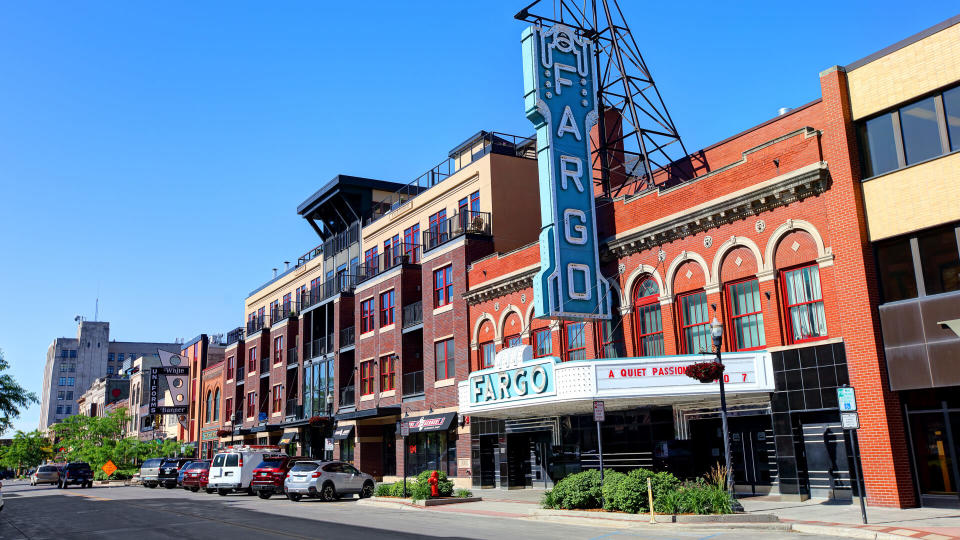
North Dakota
Annual Living Wage: $69,085
The annual cost of living in North Dakota is just slightly below the national average, but with a median annual salary north of $60,000 a year, the state’s typical resident is just $7,800 short of a living wage.

Ohio
Annual Living Wage: $63,204
Ohioans are facing a similar story as many other states in the study: low costs, but not low enough based on what most residents are earning. The median income for the Buckeye State is just $52,407, meaning the average resident is nearly $11,000 short of what they need by year’s end.

Oklahoma
Annual Living Wage: $60,318
Housing costs in Oklahoma are very low — just $8,874 on average — contributing to very low overall costs. However, with a lower median income, that leaves many Sooners still coming up short. The gap from the median salary to the living wage is still over $10,000 a year.

Oregon
Annual Living Wage: $93,285
While Hawaii’s astronomical gap of over $60,000 between its median salary and its living wage is No. 1, the state of Oregon comes in second at $37,166. Housing costs are among the largest culprits, with the average Oregonian needing over $20,000 a year to secure a roof over their heads.

Pennsylvania
Annual Living Wage: $68,581
Pennsylvania boasts a cost of living that’s just below the national average, including housing costs that are almost 7% below the typical national rate at $11,074 a year. Still, the median salary in the Keystone State is $11,630 less than the living wage.

Rhode Island
Annual Living Wage: $83,942
Unfortunately for Rhode Islanders, living in the smallest state appears to also necessitate living in a pretty small place. Housing costs there are over 40% higher than the national average, costing the typical resident nearly $17,000 a year. That’s a big part of why a living wage is over $20,000 more than the median salary there.

South Carolina
Annual Living Wage: $65,953
While South Carolina is just a little below the national average for its cost of living, the median annual salary in the Palmetto State is low enough that a living wage is still over $17,000 higher than what the average South Carolinian makes.

South Dakota
Annual Living Wage: $67,657
The average annual housing costs in South Dakota of $11,954 are just a 0.5 percent higher than the national average, part of an overall cost of living that’s just 1.5% below the national rate. That said, with a median income of just $54,126, residents are still $13,351 short of a living wage, on average.

Tennessee
Annual Living Wage: $60,682
The gap between the median income and the $60,682 living wage in Tennessee is just under $12,000, but that’s driven more by lower wages than higher costs. The overall cost of living in Tennessee is 10.5% below the rest of the country.
Find Out: Best Places To Live On a $50,000 Salary in Every State

Texas
Annual Living Wage: $63,469
Texas boasts one of the lower divides between its median income and living wage at just $6,148. One major driver is the low cost for securing housing there, coming in at just over $10,000 a year. Luckily, there are several Texas cities where you can live making less than $50,000 a year.
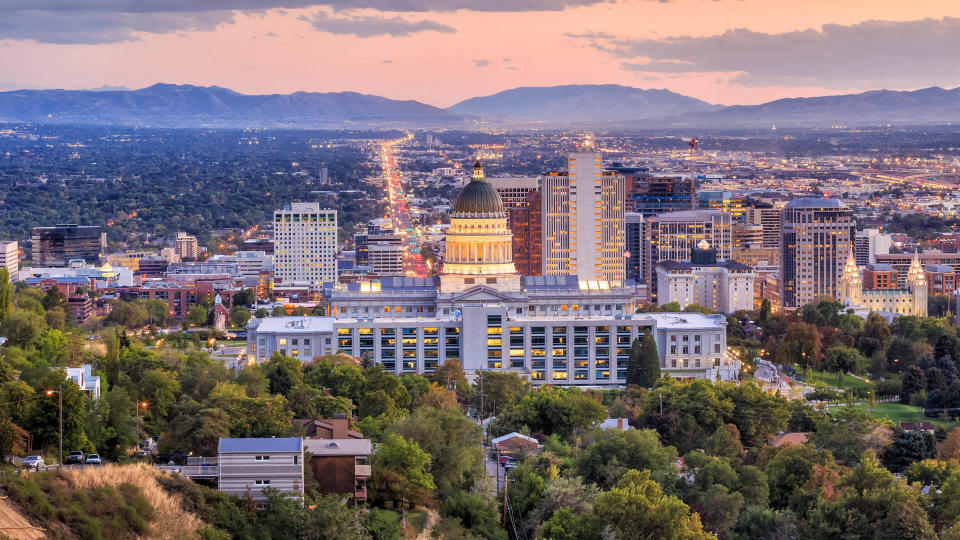
Utah
Annual Living Wage: $67,807
The $2,482 that separates the $67,807 living wage in the Beehive State from its $65,325 median income represents the third-lowest gap between those two figures in this study.
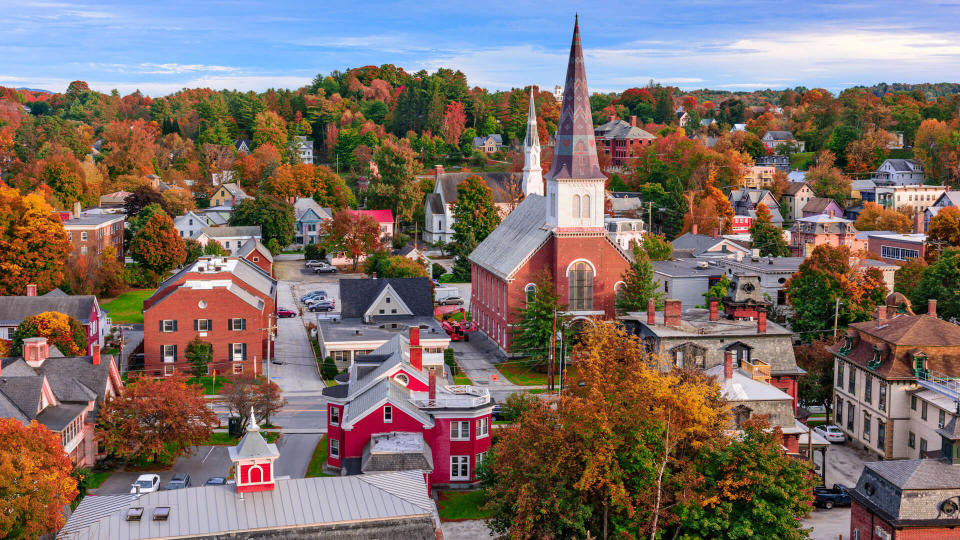
Vermont
Annual Living Wage: $83,878
Living in New England can get expensive, and the Green Mountain State is another example of this. With a cost of living nearly 20% higher than the country as a whole, the annual living wage is over $25,000 higher than the state’s median income.

Virginia
Annual Living Wage: $69,886
While the cost of living is slightly higher than the national average in Virginia, the state’s high earning power helps contribute to making it the second most affordable place to live in this study. With just $1,120 separating the median income from the living wage, the typical Virginian appears equipped to handle their annual costs.

Washington
Annual Living Wage: $77,207
While life in Washington is pretty expensive when compared to the rest of the country, salaries are as well. With the median income in the state reaching $66,174, the gap between that and a living wage is just over $11,000 a year despite a cost of living nearly 10% over the national average.

West Virginia
Annual Living Wage: $62,635
West Virginia’s median annual salary of $44,061 is lower than every other state save Mississippi and Arkansas. So, while the cost of living there is relatively low, a living wage is still some $18,574 more than the typical salary.

Wisconsin
Annual Living Wage: $67,667
Wisconsin’s relatively low average annual housing costs — $10,539 — help drive the overall cost of living lower. Still, that living wage ends up being nearly $11,000 more than the state’s median salary.

Wyoming
Annual Living Wage: $61,788
Wyoming tops the list for states that put a living wage within reach of its residents. With an overall cost of living that’s just under 10% below the national average and a median annual salary of $60,938, the average Wyoming resident is just $850 shy of what they need to get by.
More From GOBankingRates
Are You Spending More Than the Average American on 25 Everyday Items?
Guns and 32 Other Things You Definitely Do NOT Need To Buy During the Coronavirus Pandemic
GOBankingRates surveyed annual living expenses in all 50 states, using the 2017 Consumer Expenditure Survey (latest available) data from the Bureau of Labor Statistics. The itemized costs of living evaluated were housing, groceries, utilities, healthcare and transportation, collectively termed “necessities.” Based on each state’s respective cost of living index for each item, sourced from the Missouri Economic Research and Information Center’s 2018 Cost of Living Data Series, the study calculated the annual cost of each necessity and summed them up for total annual expenditure on necessities. Using the 50/30/20 budget rule, which allocates 50 percent of income for necessities, the study doubled the total annual expenditure on necessities in order to determine the “living wage” in each state. “Living wage” is defined as the income required to be able to cover 50% necessities, 30% discretionary/luxury spending and 20% for savings.
This article originally appeared on GOBankingRates.com: This Is the Living Wage You Need in All 50 States
